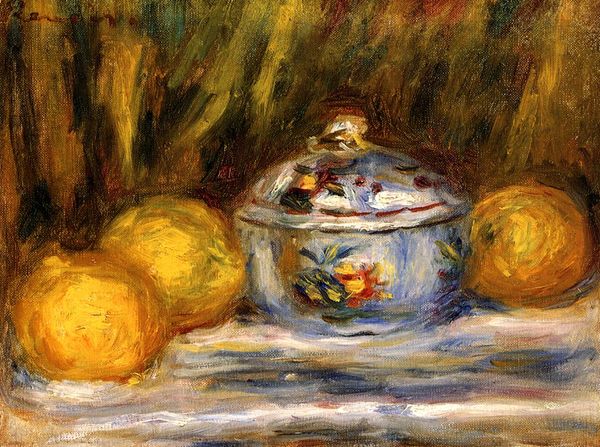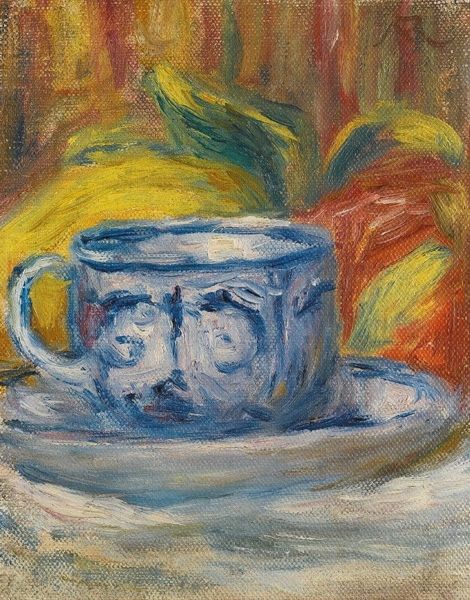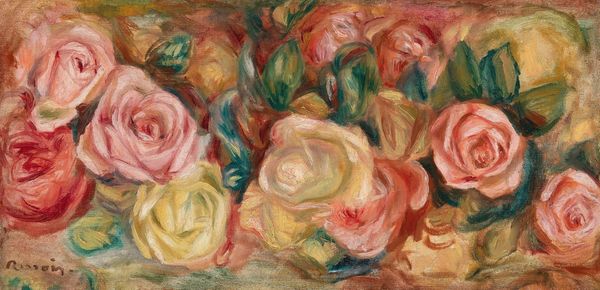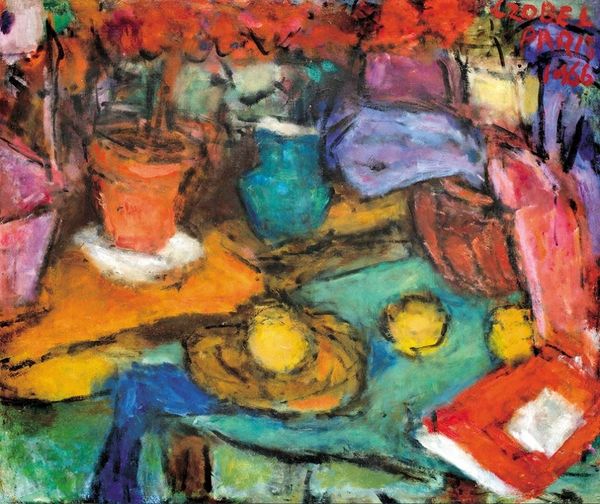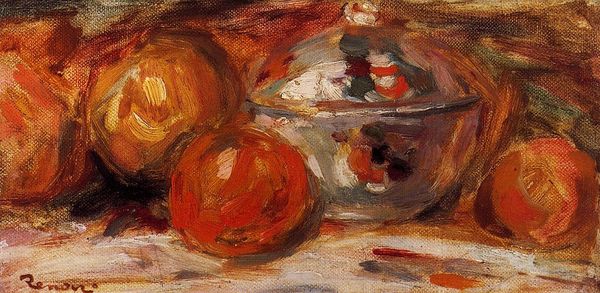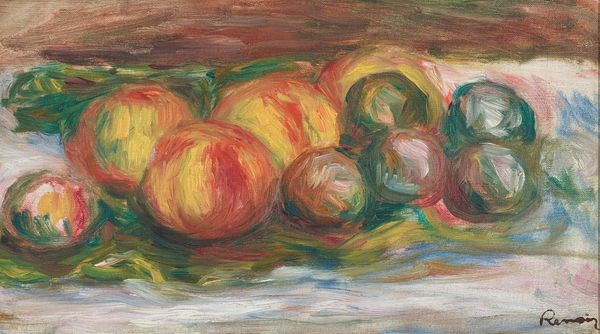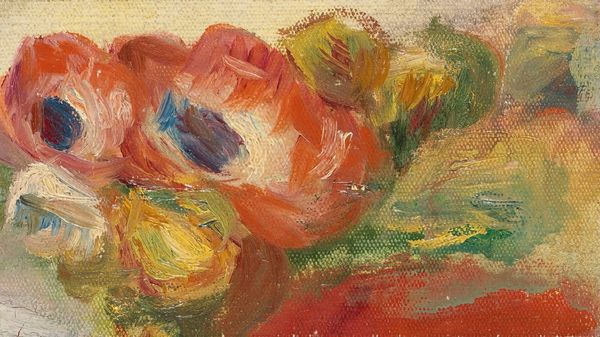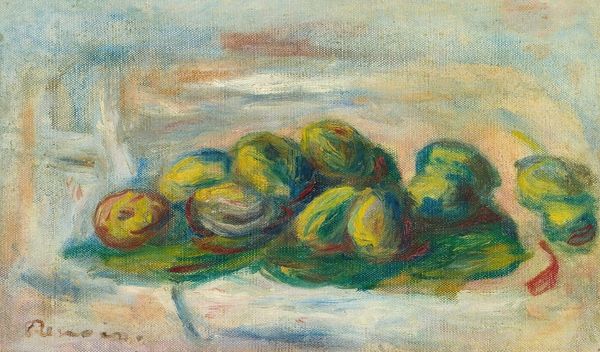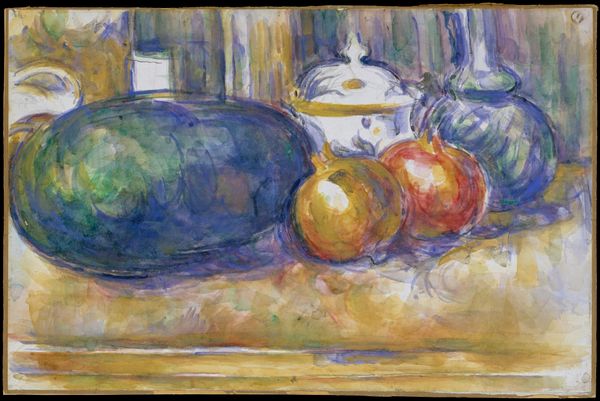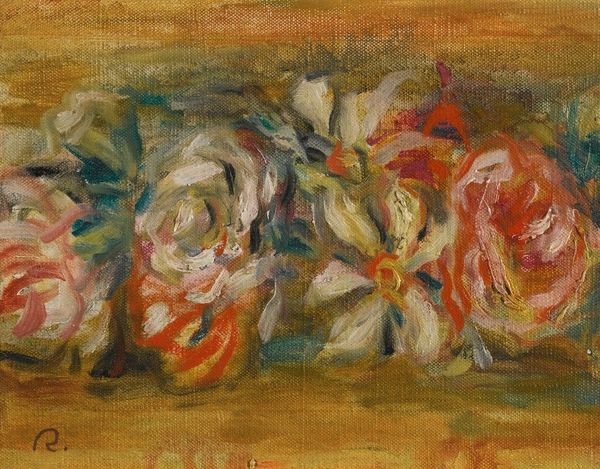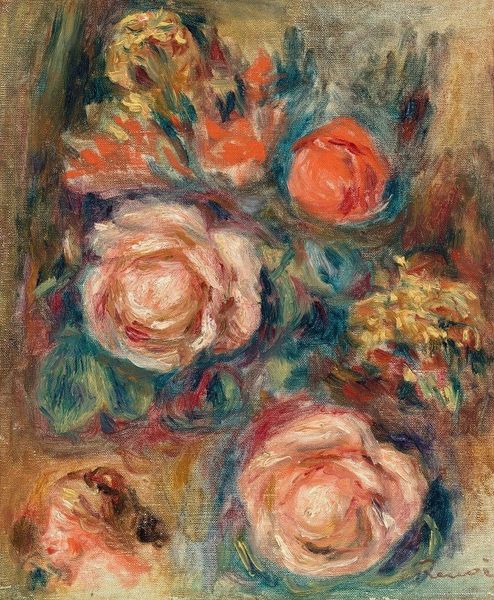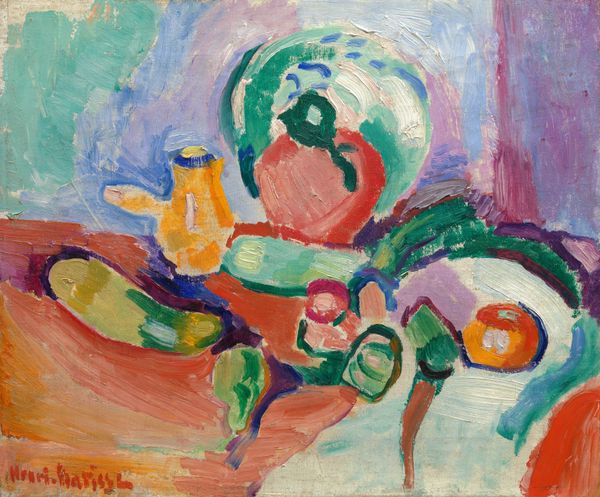
Copyright: Public Domain: Artvee
Pierre-Auguste Renoir’s oil painting, "Nature Morte, Trois Citrons Et Une Tasse," captures a fleeting moment of domestic tranquility. The still life, rendered in Renoir's signature impressionistic style, reflects the cultural values of late 19th-century France, where bourgeois life was celebrated through art and design. Renoir elevates everyday objects by using light and color, infusing the composition with an intimate, sensory quality. The lemons, symbols of the Mediterranean, and the delicate porcelain cup evoke a sense of refined taste and the pleasures of simple living. The brushstrokes might seem like a celebration of form and color, but we might also ask, is this a subtle nod to the labor involved in cultivating and producing these goods? Who had access to such luxuries, and at what cost? Through "Nature Morte," Renoir doesn't just depict objects; he invites us to consider the complex interplay between aesthetics, class, and the human experience. It's a reminder that even the most beautiful representations are rooted in a specific time and place, with social and economic implications.
Comments
No comments
Be the first to comment and join the conversation on the ultimate creative platform.

